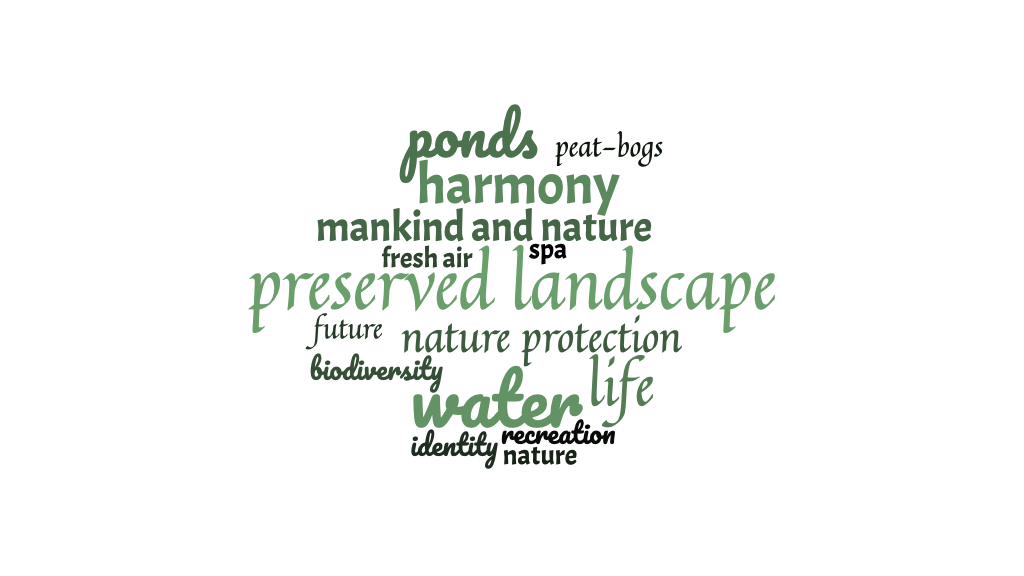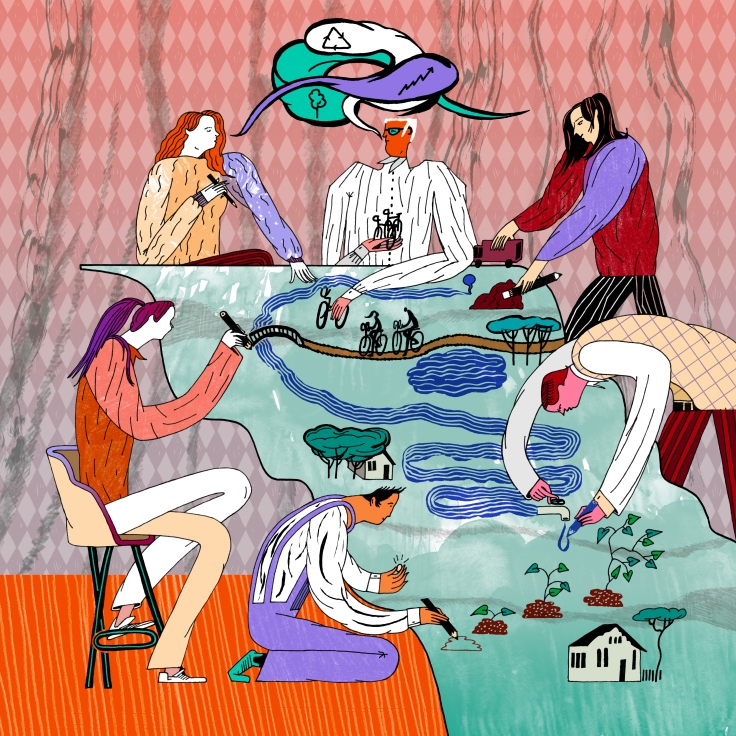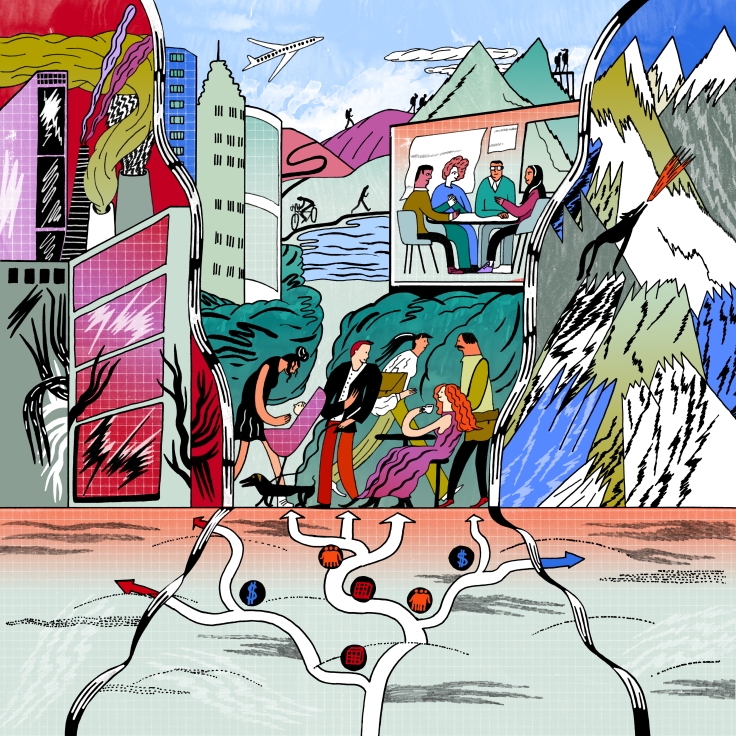If we look at nature through the lens of ecosystem services, sooner or later the question comes to mind as to whether some services compete with each other, and if so, how much? Moreover, which services compete with each other in the eyes of e.g. farmers, officials or nature conservationists? In this post we present some more results from the third round of participatory workshops held in May and June this year in Třeboň, Křivoklát, and Slavkov Forest regions.
Some of the results – preferences for specific ecosystem services (ES) among different stakeholder groups, and stakeholder influence on ES in locations – have already been the subject of a previous blog post. In this post, we would like to discuss the different interests in the landscape from the perspective of different stakeholder groups.
The issue of competing ES in selected locations and the perception thereof by different stakeholder groups was one of the key topics of the third series of workshops. Several activities were therefore focused on this topic.
First, the participants in homogeneous groups (divided according to their professions – mayors, regional officers, farmers, foresters, business representatives, nature conservation representatives, tourism representatives) filled in worksheets with several questions dealing with this issue.
One of them was, for example: “Which ecosystem services do you think compete in the local landscape?” The participants were given the opportunity to list pairs of services which, in their opinion, are in conflict in the local landscape (an increase in one will cause a decrease in the other and vice versa). The most frequently mentioned pairs of competing services were Materials and Habitat creation and maintenance. This trade-off was repeatedly mentioned across all stakeholder groups in all three locations. Another very frequently mentioned trade-off was the Food and feed service versus the Habitat creation and maintenance service. The third most frequently mentioned trade-off was the Physical and psychological experiences and Materials pair.
Next, we asked the participants to select only one of the ES in the predefined competing pairs and to justify their choice (“If providing one service would mean limiting another service, which one in this pair would you prefer in terms of your profession and why?“). These were the following pairs of services (note: these pairs were proposed on the basis of the results of a previous participatory workshop held in autumn 2022, where the participants themselves identified these services as “competing with each other”):
- Materials x Physical and psychological experiences
- Materials x Maintenance of future options
- Maintenance x Regulation of water quantity and runoff
- Habitat creation and maintenance x Physical and psychological experiences
- Habitat creation and maintenance x Materials
As shown in Table 1, when the participants were asked to choose between Materials and any of the other services (Physical and psychological experiences, Maintenance of future options, Regulation of water quantity and runoff, Habitat creation and maintenance), the latter service always “won”. Only the business group from the Třeboň region always chose the Materials service. The situation was similar with the group of farmers from the Křivoklát region who, with one exception (Materials versus Regulation of water quantity and runoff), also chose Materials in all cases.
Regulation of water quantity and runoff was the most preferred ES, selected by 12 out of 13 stakeholder groups (see Table 1). This service also came in first in terms of preference across all stakeholder groups in all three locations.
When the participants were asked to choose between the Habitat creation and maintenance service and the Physical and psychological experiences service, they overwhelmingly opted for Habitat creation and maintenance (9 groups listed Habitats, 3 groups listed Experiences). The choice was the same for the Habitat creation and maintenance and Materials pair (9 times Habitats, 3 times Materials).
The preference for Habitat creation and maintenance across all locations and stakeholder groups may be due to the fact that the selected locations, being NATURA 2000 sites, are areas of high habitat value and are valued by a wide range of stakeholders regardless of profession.

In the follow-up activity, the participants were divided into heterogeneous groups. At three different stations they explored three pairs of trade-offs (note: these were again pairs of services that the participants themselves had identified as “competing” with each other at the previous workshop): Materials x Regulation of water quantity and runoff, Habitat creation and maintenance x Physical and psychological experiences, and Habitat creation and maintenance x Materials.
This activity was carried out using the World Café method (participants share their experiences and opinions and discuss predefined topics) and the aim was for the participants to share knowledge and enrich the perspectives of other participants. The participants reflected on how to change approach in order to maintain a balance in the provision of both ecosystem services. This activity also produced interesting results; some of the main ideas from the participants are summarised in the following section.
- Materials x Regulation of water quantity and runoff
- “reforestation and restoration of logged forests (in some locations left to develop spontaneously), creation of small water bodies in the landscape to increase water retention in the landscape” (Křivoklát region)
- “change of management measures, including rainwater management, introduction of more environmentally friendly technologies and recycling of building materials, change of legislation, sustainable forest management, awareness and education” (Třeboň and Slav. Forest regions)
- Habitat creation and maintenance x Physical and psychological experiences
- “moderate and sustainable tourism, adequate infrastructure, awareness-raising, education, personal responsibility” (Křivoklát, Třeboň and Slav. Forest regions)
- Habitat creation and maintenance x Materials
- “comprehensive cooperation of all stakeholders and related changes in legislation, education, awareness and good care of the landscape and nature by users” (Křivoklát and Slav. Forest regions)
- “regulation of logging, quality legislation, changes in forest management plans, private ownership by small businesses (individuals) and their support, environmentally friendly habitat management, education of the public, communication with stakeholders” (Třeboň region)
At the end of the seminar, we asked the participants to try and describe in a few words how their location will be important in the future (2050). The most frequently mentioned terms are shown in Figure 1.

Česká verze příspěvku je dostupná na stránkách projektu zde.














Leave a comment